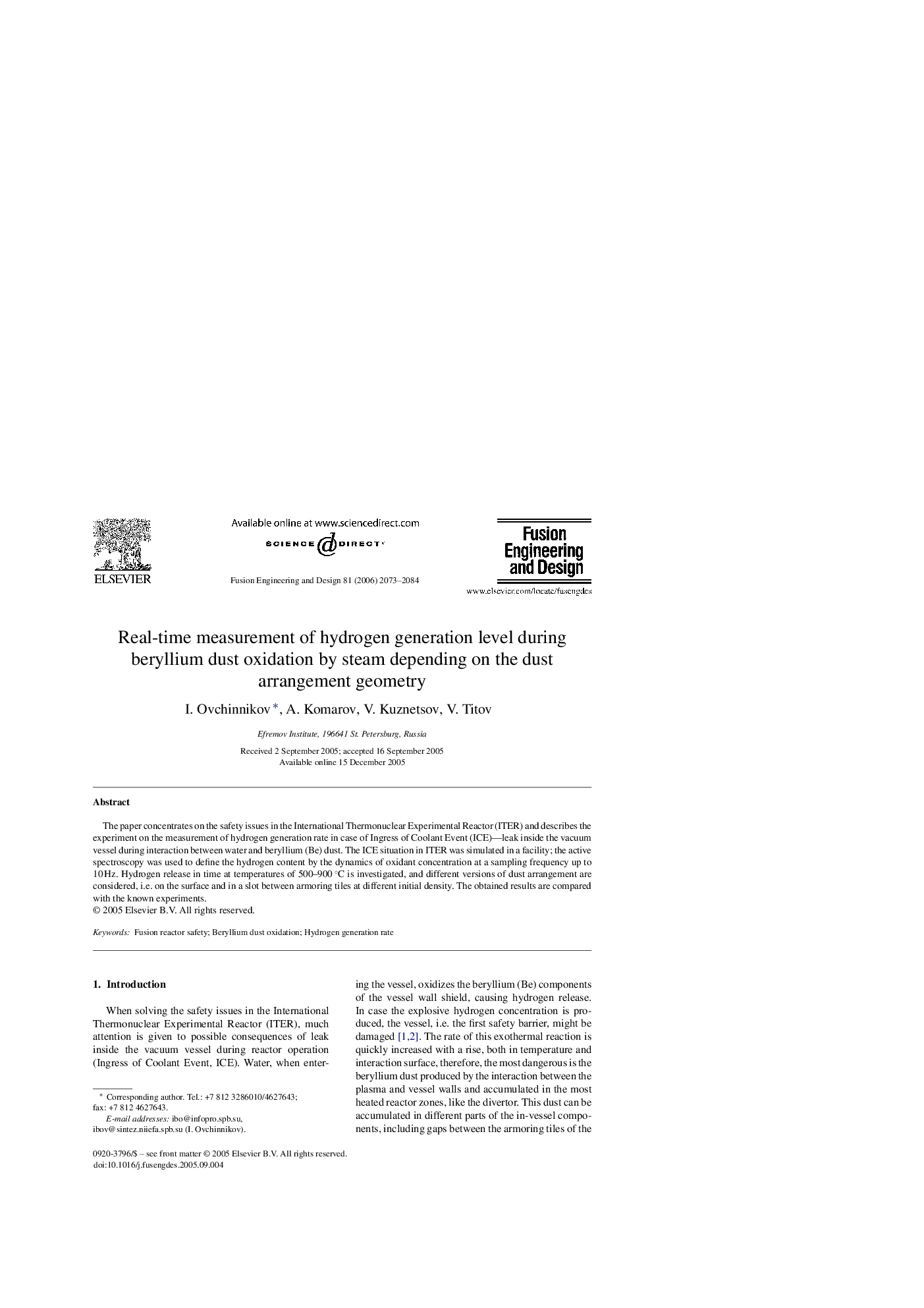| Article ID | Journal | Published Year | Pages | File Type |
|---|---|---|---|---|
| 273523 | Fusion Engineering and Design | 2006 | 12 Pages |
The paper concentrates on the safety issues in the International Thermonuclear Experimental Reactor (ITER) and describes the experiment on the measurement of hydrogen generation rate in case of Ingress of Coolant Event (ICE)—leak inside the vacuum vessel during interaction between water and beryllium (Be) dust. The ICE situation in ITER was simulated in a facility; the active spectroscopy was used to define the hydrogen content by the dynamics of oxidant concentration at a sampling frequency up to 10 Hz. Hydrogen release in time at temperatures of 500–900 °C is investigated, and different versions of dust arrangement are considered, i.e. on the surface and in a slot between armoring tiles at different initial density. The obtained results are compared with the known experiments.
